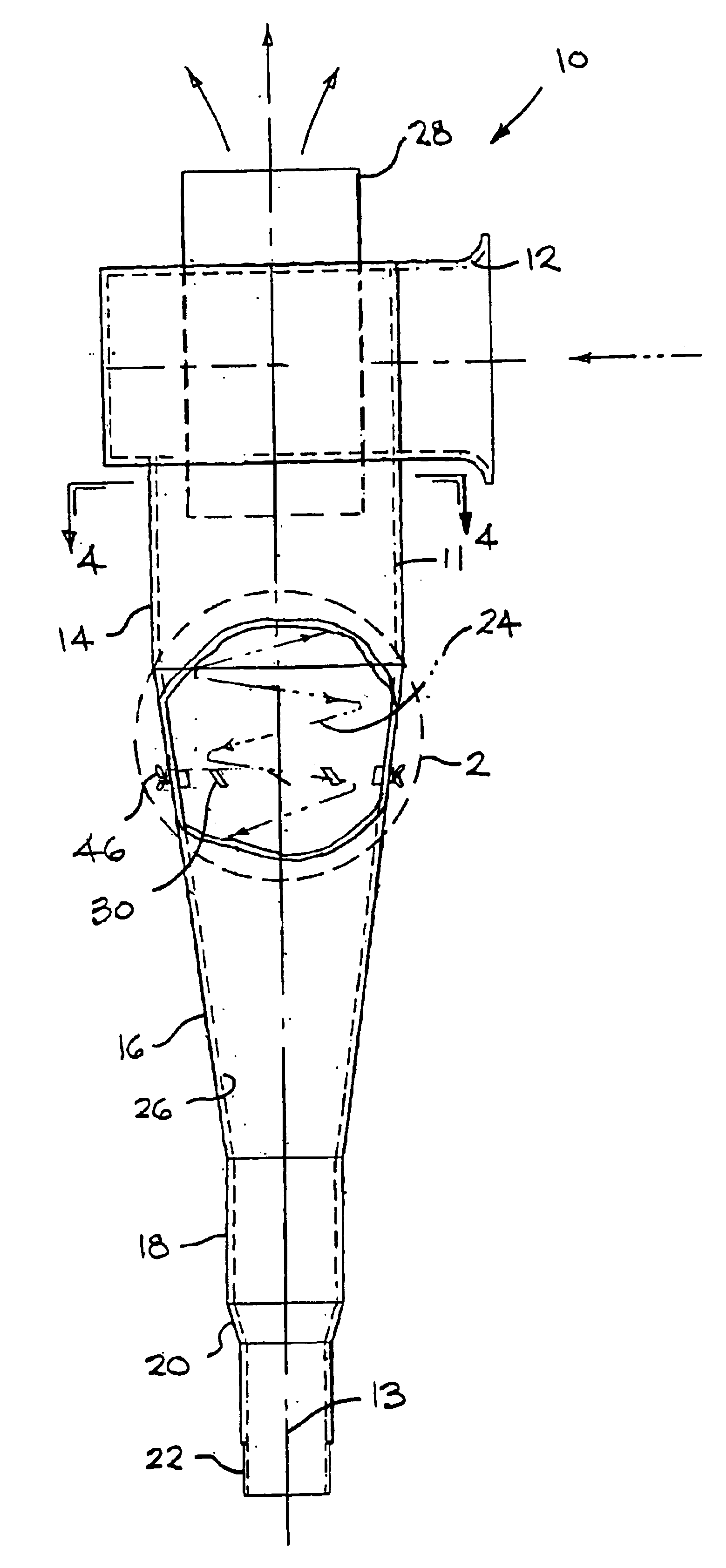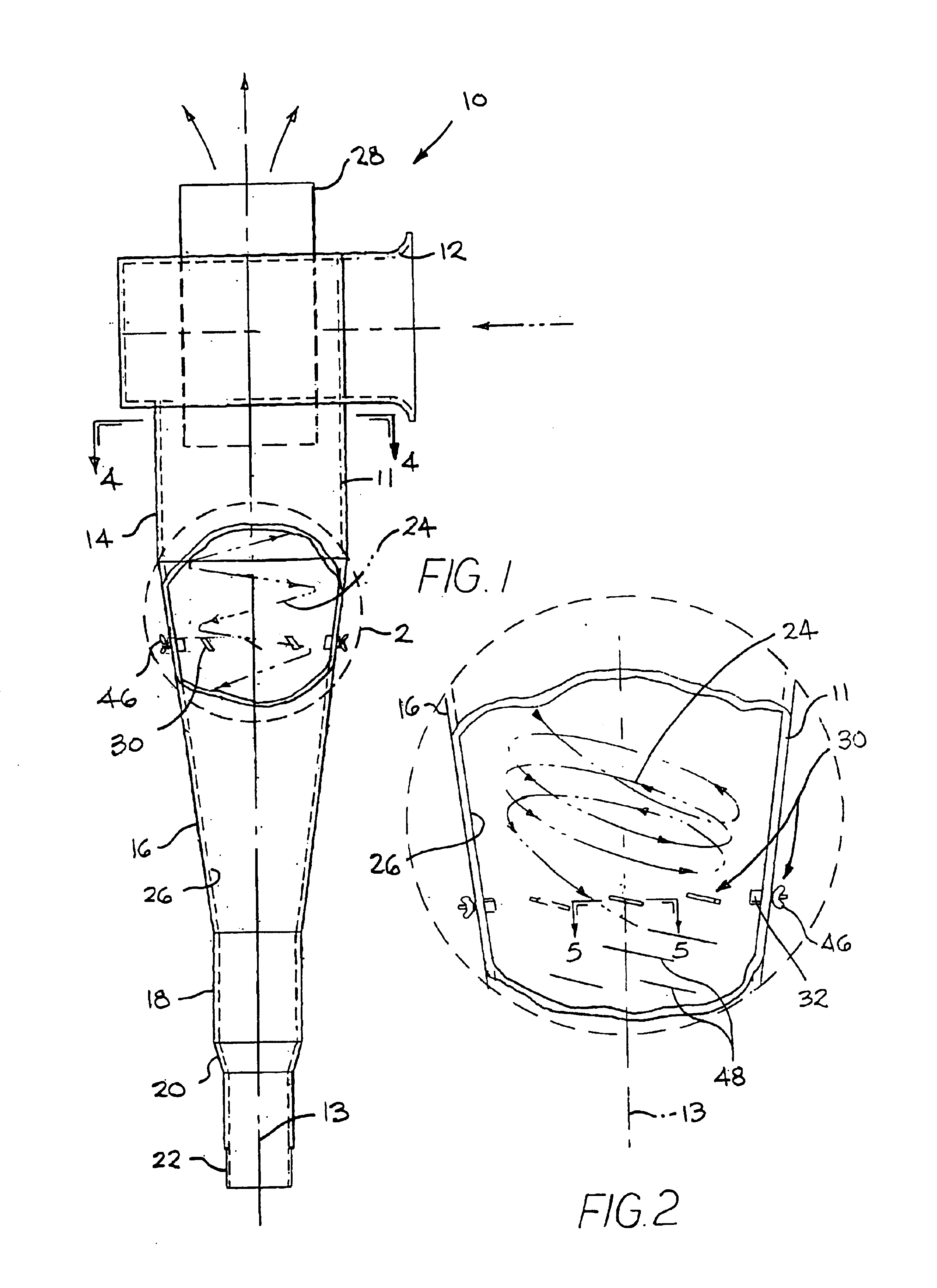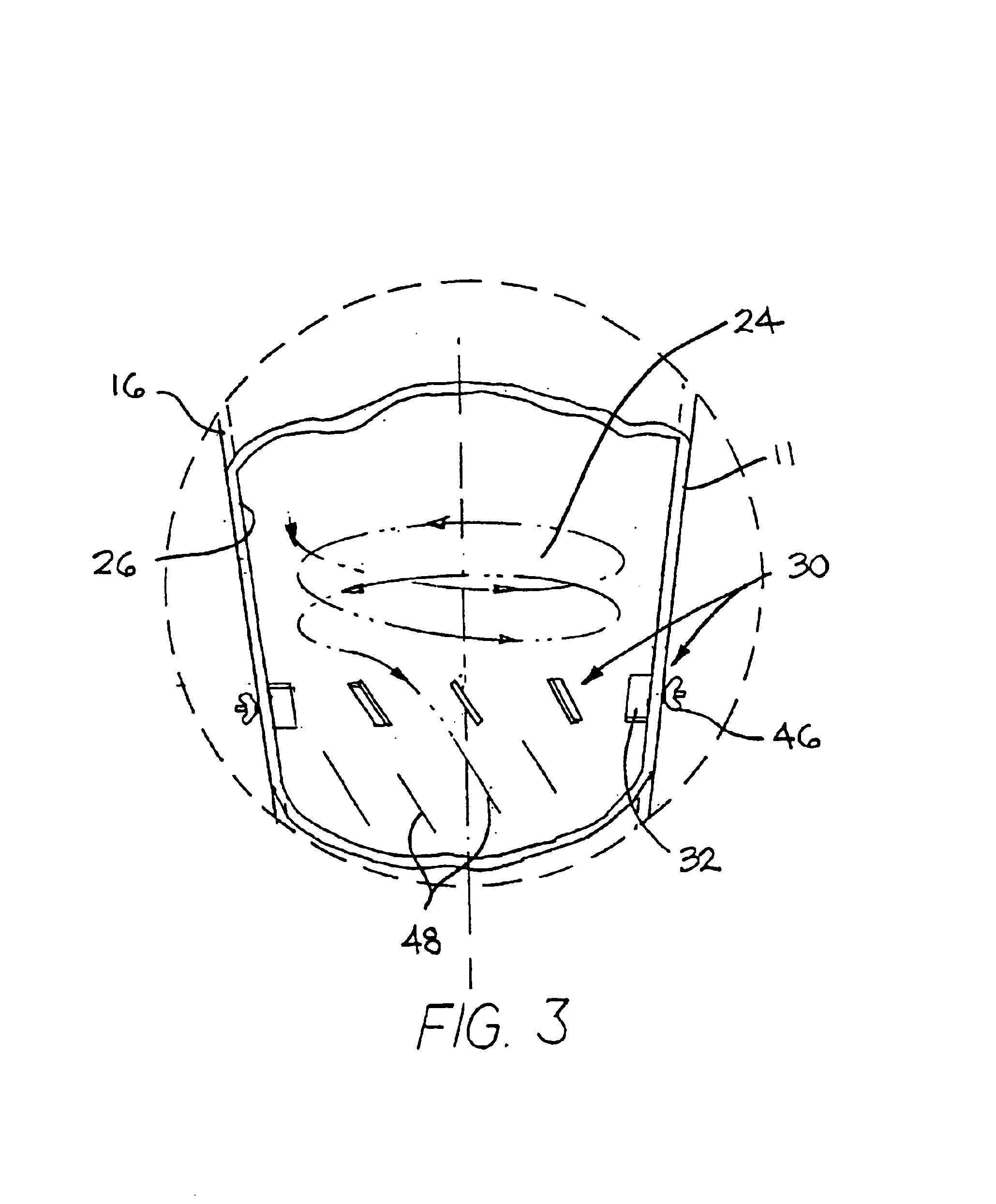Cyclone separator with surface vanes
a surface vanes and separator technology, applied in the field of cyclone separators, can solve the problems of stagnation level, excessive re-entrainment of dust particles back, and current design practices that do not optimize the combination of axial and tangential velocities, etc., to achieve the effect of reducing axial flow rate, increasing pitch angle, and flattening pitch
- Summary
- Abstract
- Description
- Claims
- Application Information
AI Technical Summary
Benefits of technology
Problems solved by technology
Method used
Image
Examples
Embodiment Construction
FIG. 1 shows a cyclone separator 10 made in accordance with the present invention. The cyclone separator 10 has a continuous side wall 11, which has a circular cross-section and defines a central vertical axis 13. The side wall 11 defines a tangential inlet 12 to allow a particulate laden gas, such as air, to enter the body of the cyclone separator 10. The side wall 11 of the cyclone separator 10 includes an upper cylindrical section 14, connected to an intermediate frustroconical section 16 (hereinafter referred to simply as the conical section 16), followed by a lower cylindrical section 18. A cylindrical, solids outlet section 22 is connected to the lower cylindrical section 18 via a concentric reducer 20. A cylindrical, clean-gas-outlet section 28 is located at the top of the cyclone separator 10, and this outlet section 28 extends a distance into the body of the cyclone separator 10 as shown in FIG. 1. Typically, particulate laden gas is drawn into and through the cyclone separ...
PUM
| Property | Measurement | Unit |
|---|---|---|
| angle | aaaaa | aaaaa |
| angle | aaaaa | aaaaa |
| angle | aaaaa | aaaaa |
Abstract
Description
Claims
Application Information
 Login to View More
Login to View More - Generate Ideas
- Intellectual Property
- Life Sciences
- Materials
- Tech Scout
- Unparalleled Data Quality
- Higher Quality Content
- 60% Fewer Hallucinations
Browse by: Latest US Patents, China's latest patents, Technical Efficacy Thesaurus, Application Domain, Technology Topic, Popular Technical Reports.
© 2025 PatSnap. All rights reserved.Legal|Privacy policy|Modern Slavery Act Transparency Statement|Sitemap|About US| Contact US: help@patsnap.com



